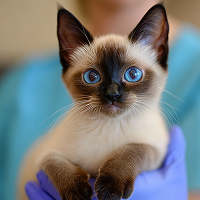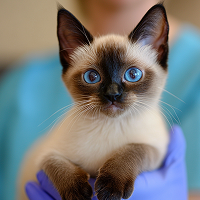What You Need to Know About Pet Insurance Waiting Periods
When your furry friend gets sick or injured, you want insurance that helps cover the cost of care. However, pet insurance policies don’t kick in immediately. Every plan has waiting periods, meaning you’ll have to wait a set amount of time before you can file a claim. Understanding these waiting periods is crucial to avoid gaps in coverage and reduce the risk of denied claims for preexisting conditions.
Key Insights
- Most pet insurance policies have waiting periods that range from a few days to several months.
- If your pet gets sick or injured during this time, those costs won’t be covered.
- Waiting periods help prevent fraud by stopping people from signing up only after their pet gets sick or injured.
- The length of waiting periods varies by provider and policy type.
- Preexisting conditions are generally not covered, but some curable ones may qualify for coverage after a waiting period.
How Waiting Periods Work
Pet insurance waiting periods are set time frames before coverage takes effect. These periods vary between insurers and policy types. For instance, accident-only policies might have a wait time of just a few days, while illness coverage can take up to 14 days to begin. Some conditions, like hereditary issues or orthopedic problems, often have even longer waiting periods.

Your policy’s effective date is when your coverage officially starts, and you can begin submitting claims. It’s essential to know this date and any related limitations before seeking reimbursement.
Impact of Waiting Periods on Coverage
Waiting periods typically don’t impact your coverage unless your pet needs care during that time. If your pet becomes ill or injured before coverage takes effect, delaying treatment could lead to a denied claim. Even if a diagnosis comes after your policy starts, insurance providers may consider it a preexisting condition if symptoms appeared earlier.
Comparing Waiting Periods Among Insurers
Waiting periods differ significantly between insurers. Here are some examples:
- Lemonade: 2 days for accidents, 14 days for illness, 30 days for orthopedic conditions
- Healthy Paws Pet Insurance: 15 days for accidents and illness, 12 months for certain orthopedic conditions in pets five years and younger
- Embrace Pet Insurance: On effective date for accidents, 14 days for illness, 180 days for certain orthopedic conditions
When choosing a policy, consider both your pet’s current health and potential future risks. Enrolling early, especially for breeds prone to specific conditions, can help ensure coverage before they become preexisting conditions.
Special Considerations for Preexisting Conditions
Some insurers will cover curable preexisting conditions if the pet remains symptom-free and treatment-free for a set period. For example, Embrace Pet Insurance and Spot Pet Insurance offer coverage for curable preexisting conditions after a waiting period ranging from 30 days to 12 months. Conditions like ear infections, diarrhea, and urinary tract infections are commonly approved for coverage after the waiting period.
Factors to Consider When Choosing a Policy
- How often will your pet need vet visits? Puppies and kittens need frequent vet visits, so look for a plan with a wellness add-on and short waiting periods.
- Does the insurer offer a waiting period waiver? Some companies allow you to waive waiting periods if your pet gets a veterinary exam within a set time frame.
- How do accident and illness waiting periods compare? Many companies offer shorter waiting periods for accidents.
- What are the waiting periods for specific conditions? If your pet is at risk for certain issues, look for a provider with shorter waiting periods for those conditions.
Frequently Asked Questions
- Is there a waiting period for pet insurance? Yes, almost all pet insurance policies have a waiting period.
- Are waiting periods different for accidents and illnesses? Yes, wait times for illnesses and accidents differ, with accident wait times usually being shorter.
- What happens if my pet has a health emergency during a waiting period? The condition won’t be covered, but don’t delay care. Waiting could put your pet at risk and lead to a denied claim if the condition is later considered preexisting.
While you can’t avoid waiting periods entirely, enrolling early and comparing coverage limits, reimbursement rates, and exclusions can help you choose the right policy for your pet.


